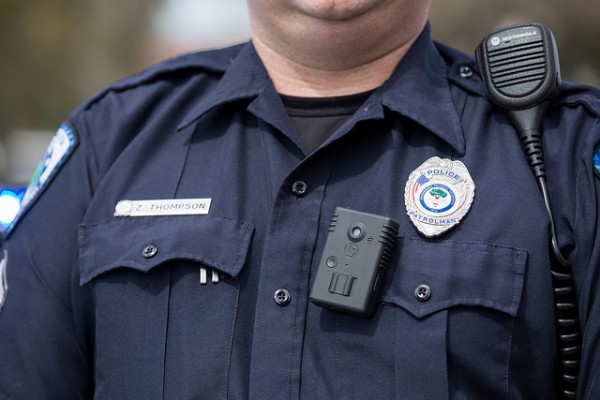
The issue of police brutality has long been a problem in U.S. criminal justice. Police-worn body cameras are one potential “remedy” to these violent encounters, but they have both benefits and drawbacks.
The cameras may increase transparency and improve police legitimacy, promote legally compliant behavior among both police officers and citizens, enhance evidence quality that can improve resulting legal proceedings, and deter officers’ use-of-force. Conversely, body-worn cameras could create privacy concerns for the officer and the citizenry and place a large logistical and financial burden on already cash-strapped law enforcement agencies.
- Michael D. White. 2014. “Police Officer Body-Worn Cameras: Assessing the Evidence.” Washington, DC: Office of Community Oriented Policing Services.
This issue is so timely that research is only now starting to see publication, but we do have some early insights. The first observational studies examining the use of police-worn body cameras were carried out in England and Scotland. They found rates of citizen complaints dropped after body cameras were introduced. Preliminary results from an experimental study in Phoenix, Arizona also suggest that the use of body cameras reduces both self-reported and official records of citizen complaints.
- Martin Goodall. 2007. Guidance for the Police Use of Body-Worn Video Devices. London: Home Office.
- ODS Consulting. 2011. Body Worn Video Projects in Paisley and Aberdeen, Self Evaluation. Glasgow: ODS Consulting.
- Charles M. Katz and Mike Kurtenbach. 2015. “Evaluating the Impact of Officer Worn Body Cameras in the Phoenix Police Department,” Center for Violence Prevention & Community Safety, Arizona State University.
The first experimental evidence concerning use-of-force comes from a large study in the Rialto, California Police Department, and the results should encourage advocates of body cameras. The study randomly assigned particular police shifts to wear body cameras (the “treatment”). Police shifts in the treatment condition are associated with reduced use-of-force: shifts in the control condition saw roughly twice as much use-of-force as the treatment condition and citizen complaints against the police were significantly reduced in the treatment condition.
- Ariel, Barak, William A. Farrar, and Alex Sutherland. 2015. “The Effect of Police Body-Worn Cameras on Use of Force and Citizens’ Complaints Against the Police: A Randomized Controlled Trial.” Journal of Quantitative Criminology 31(3): 509-535.

Comments